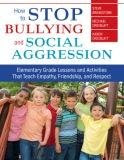If it is true that Ryan had been teased for 12 years it was just a matter of time until something tragic occurred. The ramifications of being chronically bullied include depression, anxiety, eating and sleeping disorders, self-mutilation, alcohol and drug abuse, violence and suicide. Students who exhibit long-term bullying behavior are also at great risk of dangerous behaviors.
For these and other ethical considerations, most states have laws that address bullying in school. While some of these laws are still a work in progress, the laws are a great first step. But these laws need to be followed up with training for all school staff that includes practical strategies to keep all students safe; physically and emotionally, and maintain an effective academic environment.
One effective strategy is training staff in a carefully designed four-step response to any student(s) bullying another. This response takes between 10-30 seconds and is designed to “nip bullying in the bud.” In other words, stopping bullying, social aggression and other hurtful behavior before the situation becomes chronic and a tragedy occurs. Confidence in using this 4-step response can go a long way in fulfilling goals of bully prevention laws as well as educational requirements about teaching students respect and citizenship.
First, all staff need to know what specific behaviors they are required to address, i.e. examples of physical, verbal, cyber bullying and social aggression.
When staff see or hear bullying and other hurtful behavior, they need to:
1. Stop the bullying behavior
2. Identify the specific behavior that is hurtful and unacceptable
3. Remind the student of the school’s expectation
4. Remind the student of the behavioral expectation (a replacement behavior, as appropriate).
For example, if a staff member heard a student belittling another student, the staff can state, in an authoritative yet respectful tone, the following:
1. Stop talking right now.
2. The way you were talking was insulting.
3. In this school, we don’t talk to people in a mean way.
4. When you talk to someone, say positive things. Do you understand? Good, let’s get to class.
Granted, this strategy won’t solve every problem, and staff needs to know how to respond if a student continues to be hurtful. However, most students do respond to strong, responsible leadership by adults and will comply.
There is no one solution to stop all bullying, but a consistent response from staff members will create a school culture where all students know that hurtful behavior will not be tolerated. When no one accepts 12 years of merciless teasing, perhaps we can prevent such tragedies from recurring. For more information on how to prevent bullying, visit the bullying experts at http://www.balanceeducationalservices.com/.

